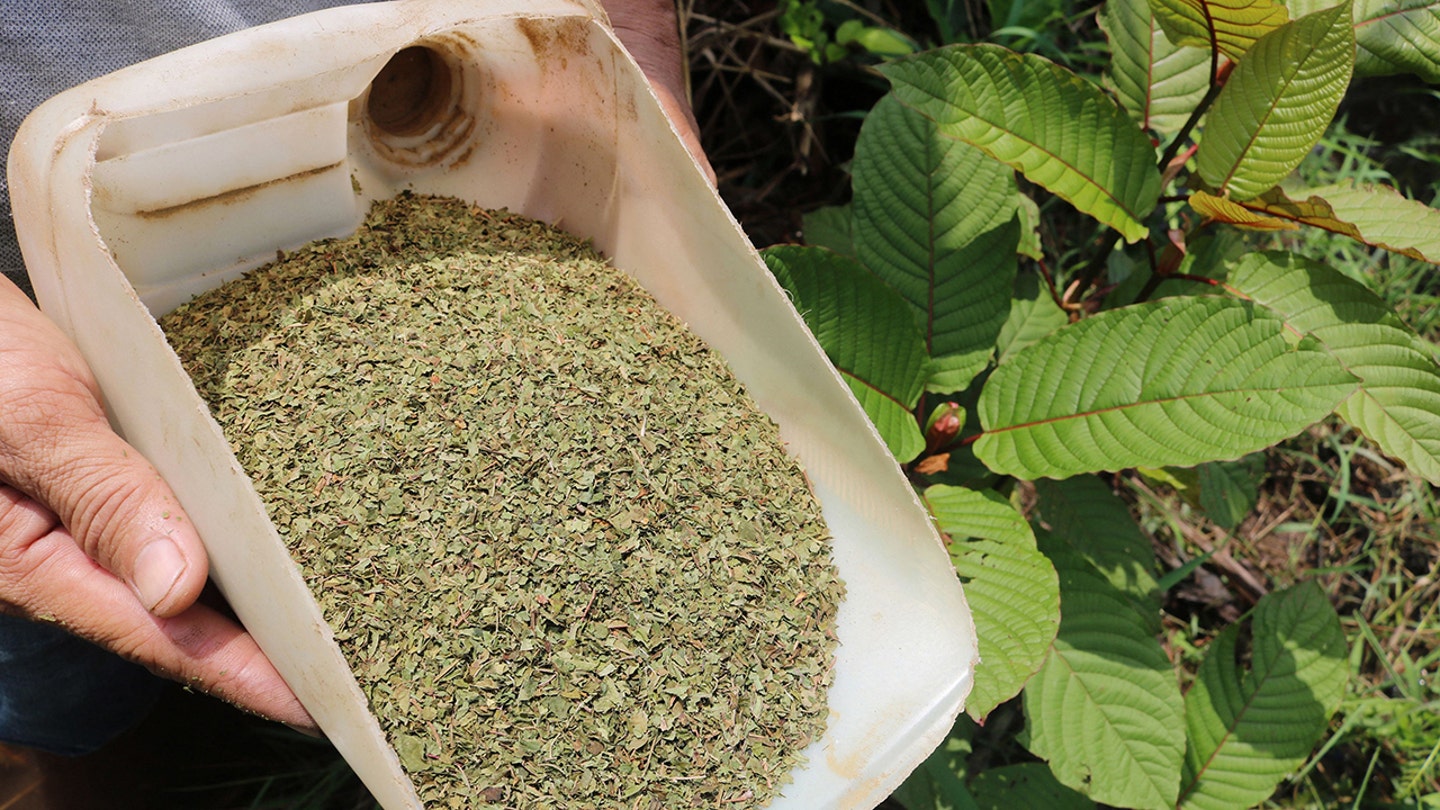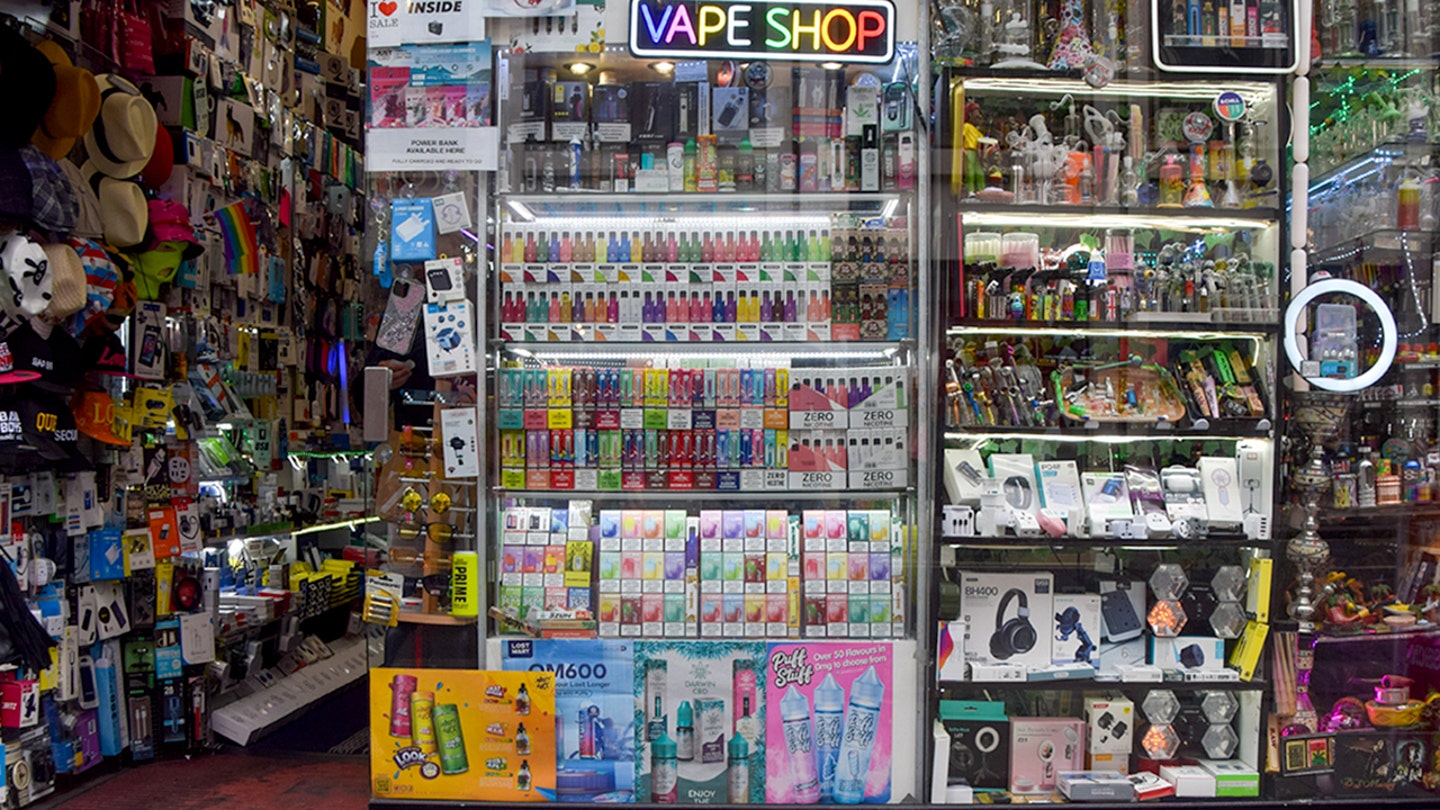NEWYou now have the option to listen to news articles!
U.S. health agencies are focusing on a concern affecting Americans that is easily accessible nationwide.
7-hydroxymitragynine, also known as 7-OH, is a potent form of kratom, a substance derived from plants commonly used for pain relief and as a stimulant.
The concentrated derivative has been associated with opioid receptors in the body, posing a risk for abuse and various drug-related symptoms.
Health officials have issued a warning about this hazardous substance that is available in stores across the nation.
The substance, labeled as a “synthetic opioid,” is being sold in drinks, powders, and tablets at various retail locations like vape shops, gas stations, and other stores nationwide.
An increase in medical events related to 7-OH has prompted the Department of Health and Human Services (HHS) and the Food and Drug Administration (FDA) to take action against sellers of these products.
A CBD and kratom dispensary is pictured in New York City. The substance, which is considered a “synthetic opioid,” has been bottled into drinks, powders and tablets sold at vape shops, gas stations and other stores across the country. (Plexi Images/GHI/Universal Images Group via Getty Images)
In a recent press release, the HHS announced that the FDA is proposing a scheduling action to regulate these products under the Controlled Substances Act (CSA).
FDA Commissioner Marty Makary, M.D., M.P.H., stated that vape stores are widespread in every neighborhood in America, many of which are selling addictive products like concentrated 7-OH.
“We cannot afford to be caught off guard again after the previous opioid epidemic,” Makary said. “7-OH is an opioid that can be more powerful than morphine. We need regulations and public awareness to prevent another wave of the opioid crisis.”
No 7-OH drugs are approved by the FDA, and it is illegal in dietary supplements or conventional foods.
What is kratom?
Kratom is derived from the leaves of a tree (Mitragyna speciosa) found in Southeast Asian regions like Malaysia and Thailand. The leaves contain over 40 different active compounds, with the most prominent ones being mitragynine, 7-hydroxymitragynine, and speciofoline.

A pile of kratom leaves is seen at a stall in the market in Bangkok on September 11, 2021, in Bangkok, Thailand. Kratom is derived from the leaves of a tree (Mitragyna speciosa) found in regions of Southeast Asia. (Vachira Vachira/NurPhoto via Getty Images)
The plant is believed to have dual properties, providing a stimulant effect at low doses and an opioid-like, analgesic effect at higher doses.
CLICK HERE TO GET THE FOX NEWS APP
Most Americans use kratom to self-treat chronic pain and alleviate symptoms of opioid withdrawal, according to experts.
How is kratom different from 7-OH?
When isolated in its concentrated form, 7-OH, the active metabolite in the kratom plant, becomes a highly potent analgesic.
7-OH can be more potent than morphine, leading to the risk of abuse and drug-related symptoms like dependence and withdrawal.

The leaves of the tree contain more than 40 different active compounds, with the most prevalent being mitragynine, 7-hydroxymitragynine and speciofoline. (LOUIS ANDERSON/AFP via Getty Images)
While kratom may be advertised as safe and natural, its composition can vary widely and may not accurately reflect the product labeling.
Although major toxic effects from kratom are rare, consuming large amounts or combining it with other substances can lead to adverse reactions like hallucinations, convulsions, coma, and in extreme cases, death.
CLICK HERE TO SIGN UP FOR OUR HEALTH NEWSLETTER
There is also a risk of developing dependence and withdrawal with heavy kratom use, along with side effects like nausea, dizziness, confusion, and tremors.

“They’re marketed for children,” RFK commented on the products at vape shops. “They’re gummy bears, they’re bright colors, they’re candy-flavored.” (iStock)
The FDA and HHS have called for action against 7-OH products in a recent press conference, highlighting the increasing availability of the substance and the impact of addiction on the public.
“They’re putting [vape shops] around schools, they’re putting them in our poorest neighborhoods, and now they’re putting them in every gas station,” the HHS secretary remarked.
“They’re marketed for children. They’re gummy bears, they’re bright colors, they’re candy-flavored. This is really a sinister, sinister industry.”
During the same press conference, Makary emphasized that the agencies do not consider pure kratom as “safe” for consumption at this time.
Shiv Sudhakar contributed to this report.
In a recent development, a new study has found that consuming dark chocolate may have several health benefits. The study, published in a reputable medical journal, suggests that the antioxidants found in dark chocolate can help improve heart health by reducing inflammation and increasing blood flow. Additionally, the study found that dark chocolate can also have a positive impact on brain function, potentially reducing the risk of dementia in older adults.
The researchers involved in the study recommend consuming dark chocolate that contains at least 70% cocoa in order to reap the benefits. They caution, however, that moderation is key as dark chocolate is still high in calories and sugar. It is important to balance chocolate consumption with a healthy diet and lifestyle.
This new research adds to a growing body of evidence supporting the health benefits of dark chocolate. Previous studies have linked dark chocolate consumption to a reduced risk of heart disease and stroke. So, next time you have a sweet craving, reaching for a square of dark chocolate may not be such a bad idea after all.





